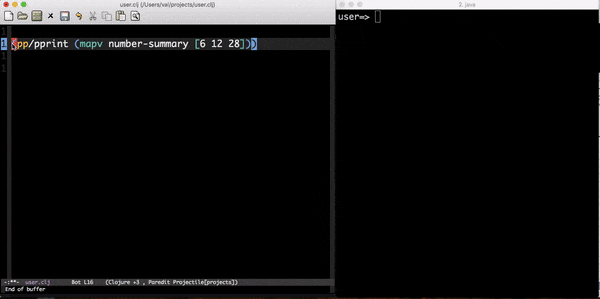user=> (require '[clojure.reflect :as reflect])
nil
user=> (reflect/reflect java.io.InputStream)
{:bases #{java.lang.Object java.io.Closeable}, :flags #{:public :abstract}, :members #{#clojure.reflect.Method{:name close, :return-type void, :declaring-class java.io.InputStream, :parameter-types [], :exception-types [java.io.IOException], :flags #{:public}} #clojure.reflect.Method{:name mark, :return-type void, :declaring-class java.io.InputStream, :parameter-types [int], :exception-types [], :flags #{:public :synchronized}} #clojure.reflect.Method{:name available, :return-type int, :declaring-class java.io.InputStream, :parameter-types [], :exception-types [java.io.IOException], :flags #{:public}} #clojure.reflect.Method{:name read, :return-type int, :declaring-class java.io.InputStream, :parameter-types [], :exception-types [java.io.IOException], :flags #{:public :abstract}} #clojure.reflect.Method{:name markSupported, :return-type boolean, :declaring-class java.io.InputStream, :parameter-types [], :exception-types [], :flags #{:public}} #clojure.reflect.Field{:name MAX_SKIP_BUFFER_SIZE, :type int, :declaring-class java.io.InputStream, :flags #{:private :static :final}} #clojure.reflect.Constructor{:name java.io.InputStream, :declaring-class java.io.InputStream, :parameter-types [], :exception-types [], :flags #{:public}} #clojure.reflect.Method{:name read, :return-type int, :declaring-class java.io.InputStream, :parameter-types [byte<>], :exception-types [java.io.IOException], :flags #{:public}} #clojure.reflect.Method{:name skip, :return-type long, :declaring-class java.io.InputStream, :parameter-types [long], :exception-types [java.io.IOException], :flags #{:public}} #clojure.reflect.Method{:name reset, :return-type void, :declaring-class java.io.InputStream, :parameter-types [], :exception-types [java.io.IOException], :flags #{:public :synchronized}} #clojure.reflect.Method{:name read, :return-type int, :declaring-class java.io.InputStream, :parameter-types [byte<> int int], :exception-types [java.io.IOException], :flags #{:public}}}}


